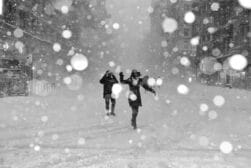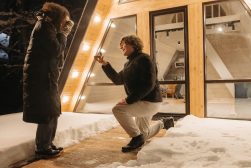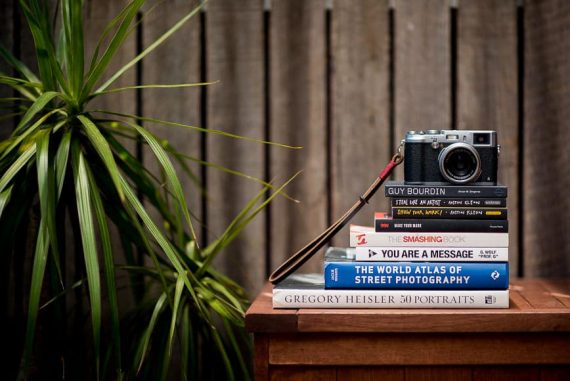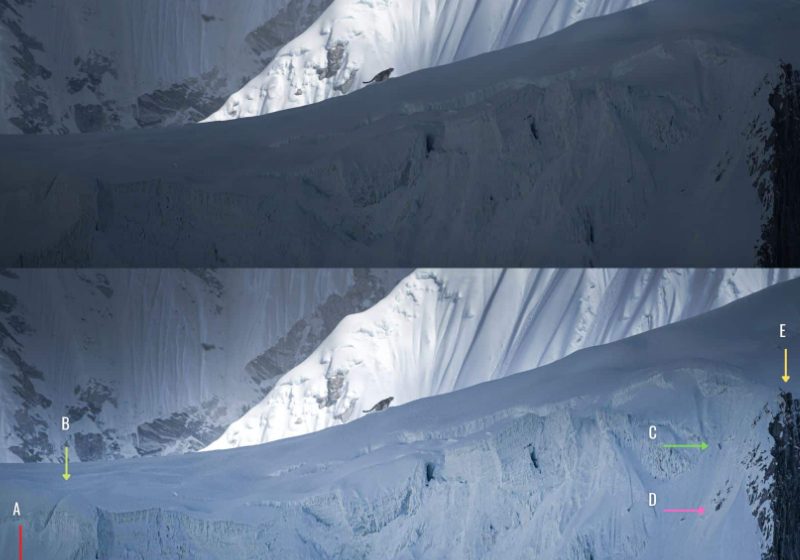
Photographer Fakes Viral Snow Leopard Images, Tries to Justify Result
News | By Stephan Jukic | November 30, 2022
Recently, a number of major general news and photography-related websites published coverage of spectacular-looking photos taken by American photographer Kittiya Pawlowski of a snow leopard prowling over soaring Himalayan mountain passes in its remote native habitat.
The images, which did indeed look quite impressive, were covered by websites ranging from PetaPixel to the Times of London with no shortage of appreciation.
They were particularly captivating not only for their actual imagery but also as examples of the supposedly authentic and spectacular results of one photographer’s tenacity against the elements in a harsh environment for the sake of the craft.
That they also happened to be about a famously elusive and exceptionally beautiful wild feline doubtless helped spread their fame.
Pawlowski’s own long and very visual narrative on her website about how hard she worked to capture the images also helped build an easily viral story for the web and social media.
Her blog post elaborately details how she’d flown into one of the world’s most dangerous airports and then backpacked into the deep valleys of Sagarmatha National Park to then climb up to an altitude of 5,486 (18,000 feet) meters above sea level.
Along the journey, which she claimed involved trekking 103 miles, camping in the wilderness and waking up at 4 am to climb ever higher into the sunlit upper slopes of some of the world’s tallest mountains, she also had to haul along 25 lbs of camera gear that included a massive 500mm Nikkor lens.
The effort paid off though and she finally found her chance at a series of superb last-minute photos of the elusive leopard.
As one particularly poignant part of her own narrative described, “Squinting through my camera’s telephoto lens, I noticed something in the shadow of Mount Pumori. At first, I thought it was a rock, but it was exactly what I was looking for,”
The entire story and the resulting widely published photos were understandably easy viral material.
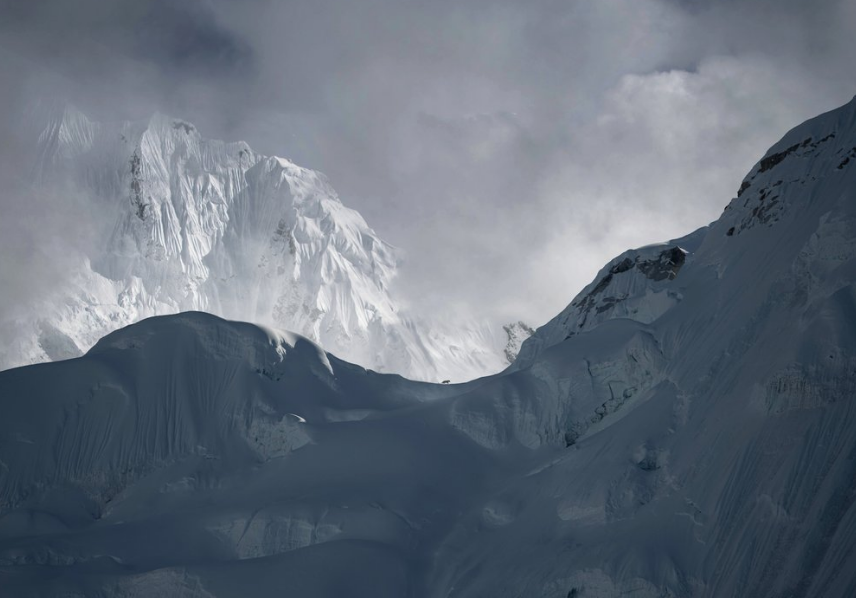
Image source: Kittiya Pawlowski
In no time, one of her shots was even listed on the website of the famous London-based Saatchi Gallery for £1,305 ($1,566), with a description of Pawlowski as a “photographer that uses visual storytelling to capture the beauty of Earth.”
What a shame it later turned out to be that so much of the above, and the photos themselves were largely faked.
As PetaPixel itself later disappointedly reported along with others, the images were first doubted by the publication Alpine Mag. In a long and carefully argued piece, it vigorously proclaimed them to be composite shots and then went into deep detail about the reasons for these doubts.
Most importantly, the reporters at Alpine Mag consulted with wildlife photographer Vincent Munier, who has real, verified experience photographing snow leopards in their remote native habitat along Nepal’s Himalayan slopes.
According to Munier’s comments to Alpine Mag, “The implausibility of these photos struck me immediately,”
He explains this by adding that “They are called snow leopards, but they almost never venture on to snow, even less into areas of ice and crevasses where there is no prey. They never look for difficulties. They stay on rocky terrain.”
Munier also noted “I’ve seen leopards going over passes, but they move very fast and are almost impossible to capture. A leopard posing sitting down is highly improbable.”
The wildlife photographer then went on to describe how even the lighting of the mountain slopes in the images, along with the background scenes were all very unusual to him, to the point that they didn’t jibe right.
The Alpine Mag article goes into many other details of the photos that point to a very heavy amount of composition editing and photo alteration in which the snow leopard itself was possibly added later.
The writers of the piece even argue that the alpine peaks surrounding the subject of the images are themselves outright faked, mainly by having been composed of cuts from multiple different photos that were expanded or shrunk to create a largely false landscape.
Overall, they go into painstaking detail with their explanation of exactly how and where Pawlowski falsified her shots and finally, call into question the leopard itself.
As the Alpine article explains, after first contacting Pawlowski for high-resolution copies of her photos, she enthusiastically replied with several samples. These included EXIF and metadata indicating the use of a Nikon D850 camera and her claimed Nikkor 500mm lens, with which she poses in a supposed photo of herself during her Himalayan trek.
However, when the magazine checked the dates on the photos, it found these set to 01/01/2018, meaning that the supposed shots were essentially undated since Pawlowski herself claimed to have traveled to Nepal and taken them “In September-October” of 2022.
Following these initial suspicions, Alpine Magazine requested “two unalterable source-files for the photos”, either in the form of RAW or NEF copies. To this request, she didn’t reply at all.
Alpine claims to still be investigating the photos further, but its main concern was that if the whole composition of scenery behind the key leopard photos was so heavily falsified and altered, where did the photo of the leopard itself come from, and was it even taken by this particular photographer?
As Munier argued in statements for the investigative piece, “This is serious and it’s important to call it out, otherwise, it’ll get worse and worse. It works, she has written a good article and she’s boastful. It’s the quest for great photos. It’s both incredible and sad.”
It’s hard not to agree with this assessment. These photos went seriously, heavily viral and were claimed to be fully authentic by Pawlowski’s long and intense blog narrative.
Aside from being featured in several major magazines and newspapers, some of them were sold for hefty prices to buyers who presumably believed them to be fully real.
Even the American Embassy in Nepal was taken in by promoting them as real images. So too was the highly influential Instagram account of Animal Planet.
Alpine Mag goes much further than we’ll detail here in its breakdown of all the reasons for why Pawlowski probably faked her images to an enormous degree. For that it’s worth a read. The magazine also further speculates that she might not even exist as a real person under that name.
Whatever the case may be, the supposed wildlife photographer Kittiya Pawlowski later did indeed respond to some of these accusations.
In a disclaimer only later posted on her website, she retroactively does admit to some editing. Still, she ultimately claims that the images are quite real despite the very strong evidence of a much different thing presented by Alpine Mag:
“Some images are composites, some are not. Some are only lightly retouched. I am NOT a journalist. I never stated my images were not edited anywhere.”
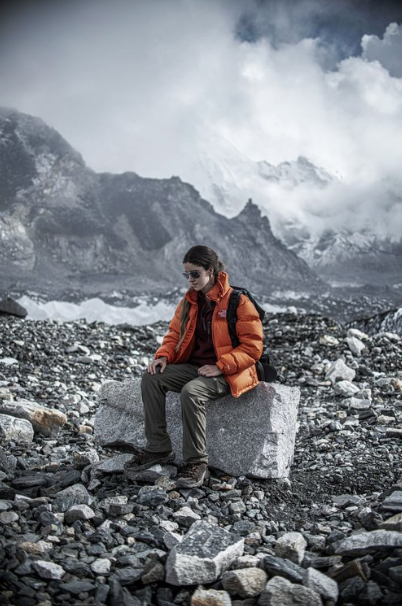
Kittiya Pawlowski during her claimed Himalayan trek
She then goes on to paint the highly detailed suspicions about the origin of her photos as a case of intentional misinterpretation:
“News and media from around the world stole my images and published them with their own meaning. They did not ask me if they were edited. They interpreted them in their own way and spread them around the world.”
She further states that she had donated $787.50 from sales of the image prints to the Snow Leopard Trust, though this hasn’t been confirmed.
Most notably, her claims to be a victim of unfair standards are worth quoting:
“I am getting emails demanding that I provide processing videos, RAW files, etc for all of my images. I am NOT obligated to do that. There are hundreds of photographers that edit their images, change backgrounds, add big ass moons, lightning bolts, blur effects, fog, etc. I will not create detailed videos or add disclaimers to every single image about how every photo was processed. No one else has to do this, why am I the only person in the world required to do this?”
Maybe because enough evidence piled up per photo to indicate that just about every aspect of the scenery was cut and pasted in very false ways?
The evidence presented by these supposedly misleading media sources paints a picture of something that goes way beyond any reasonable standard of photo-correction for nature photos that were strongly implied to be completely real.
Her Instagram and Facebook accounts, which were also investigated by Alpine Mag, have since been deleted by the supposed photographer.
Notably, we’ve found that she has also filed DMCA content removal claims against both PetaPixel and Alpine Mag for removal of her photos form their sites, though a strong fair use case can be argued by both sites.
If this individual did really capture shots of a snow leopard during the trek she described, everything else about creating such elaborately misleading, even false composites then makes little to no sense.
Update Note: Pawlowski’s current website, kittiyapawlowski.com, was created on on July 18th of 2022. while several posts along the bottom of her main page are dated from between April and March of 2021, apparently from having been first hosted on a previous version of the site that’s now archived.
Among these is one claiming the photographer as a finalist for a Travel Photographer of the Year award in the ONE SHOT – ‘Colours of Life’ and ONE SHOT – ‘Islands’ Categories. A link to on her site to the Tpoty 2020 finalists page however shows a “Page not found” result.
In other awards referenced in her posts, the photographer is indeed mentioned based on the available links to these websites, though some of these images themselves seem to be composites.

Check out these 8 essential tools to help you succeed as a professional photographer.
Includes limited-time discounts.





